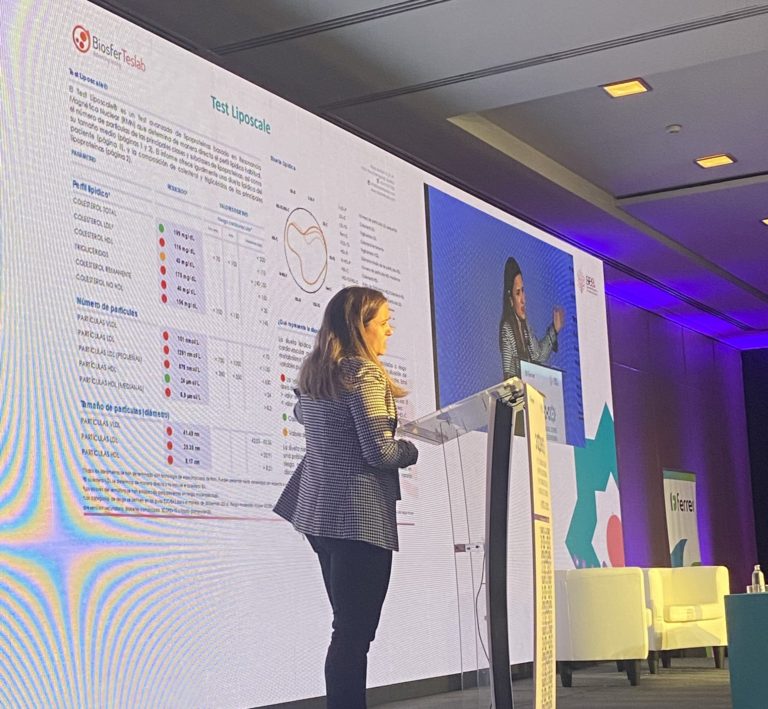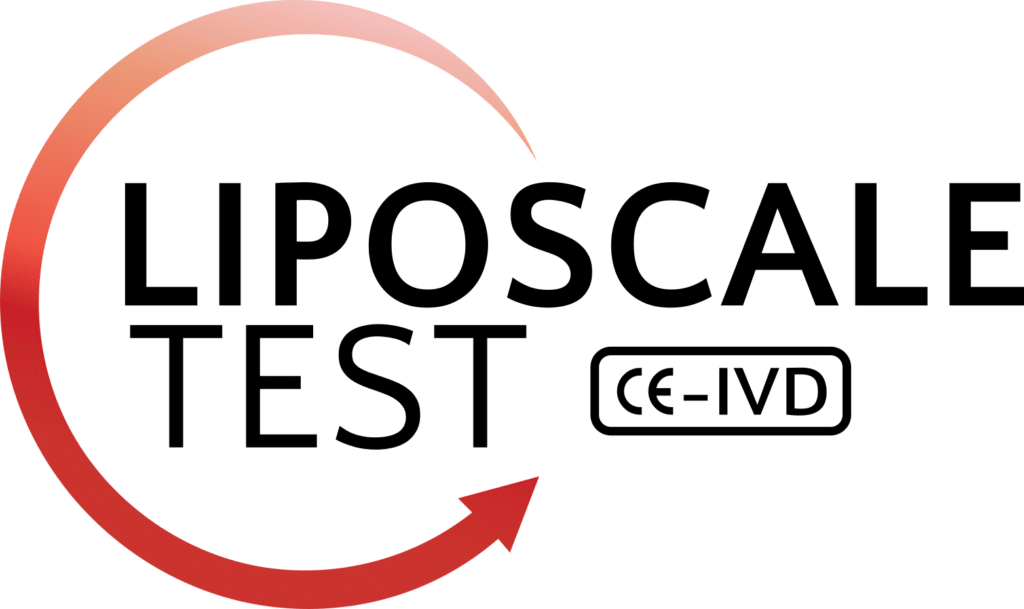On March 17th and 18th, the 17th Conference on Hypertriglyceridemia and the 8th Conference on lipid units organized by the Spanish Society of Arteriosclerosis (SEA) took place. Dra. Daiana Ibarretxe gave a presentation entitled “Lipid and inflammatory markers in ischemia premature” in the session Dyslipidemia and cardiovascular risk in special situations. She presented the use of both the lipoprotein profile and the glycoprotein profile from Biosfer Teslab as a very useful tool for the assessment of cardiovascular risk.

ABSTRACT
Cardiovascular diseases are the leading cause of mortality in our country, however, there are episodes of CVD in patients whose plasma concentration of LDL-C is within therapeutic targets. The pathogenesis of atheromatous disease is multifactorial. Various biochemical and cellular mechanisms are involved in the development of vascular lesions, such as inflammation, oxidation, fibrosis or cell proliferation and migration, among others. These alterations are activated in response to various damages produced in the arterial intimal layer. The etiological role of cholesterol in atherosclerosis has been widely demonstrated and it is known that it cannot reach the arterial wall by itself, but rather as part of the lipoprotein particles. Triglyceride-rich lipoproteins (TRL) deposit cholesterol by introducing it into macrophages and activating inflammatory mechanisms, LDL penetrating the wall and being retained with greater or lesser affinity depending on their size. That is, the determining factor of the atherogenic potential are the lipoprotein particles, their number, their size and their composition.
Lipid metabolism is more complex than it appears based on conventional lipid profile determination. Through the Liposcale® advanced lipoprotein test, different lipoproteins can be analyzed in their respective subfractions, and characterized in terms of composition and size, as well as quantifying the number of each of these particles. This provides additional information for the management of patients with metabolic disorders or established cardiovascular diseases. In patients in whom a residual risk persists despite an optimal approach, NMR provides additional data, since, beyond the conventional lipid variables, qualitative changes usually persist that impact the prognosis of these patients.
On the other hand, inflammation is a widely studied pathophysiological mechanism of arteriosclerosis; In this context, over the years, multiple mediators have been proposed as biomarkers. Acute phase serum glycoproteins are increased in the liver during the phase of systemic inflammation and due to their unique common biochemical characteristics, they can be measured by 1H-NMR. Three NMR signals are determined, called Glyc-A, Glyc-B and Glyc-F. Especially the concentrations of Glyc A have been associated with various inflammatory diseases such as rheumatoid arthritis or chronic infections such as that due to HIV. The sensitivity of the technique allows the presence of subclinical inflammatory activity to be evaluated, which makes it especially interesting in situations of mild but chronic inflammation, as occurs in cardiovascular diseases and certain metabolic situations such as diabetes or obesity.
In a recent study it has been published that the glycoprotein profile measured by 1H-NMR seems to be a robust marker of inflammation in a population with familial hypercholesterolemia (FH) and could be considered a cardiovascular prognostic marker.
The combination of lipoprotein and glycoprotein analysis, which is performed in the same NMR signal acquisition, should allow the development of a tool of great clinical utility to assess cardiovascular risk.
REFERENCES
Pintó X; Masana L; Civeira F; Real J; Ibarretxe D, Candas B, et al. Consensus document of an expert group from the Spanish Society of Arteriosclerosis (SEA) on the clinical use of nuclear magnetic resonance to assess lipoprotein metabolism (Liposcale®). Clin Investig Arterioscler. 2020;32:219 – 229.
Masana L; Ibarretxe D. Magnetic resonance-assessed lipoprotein profile. The time has come for its clinical use. Rev Esp Cardiol (Engl Ed).2022; 75:5 – 8.
Akinkuolie, A. O., Buring, J. E., Ridker, P. M., & Mora, S. A novel protein glycan biomarker and future cardiovascular disease events. Journal of the American Heart Association. 2014; 3(5), e001221.
Akinkuolie, A. O., Pradhan, A. D., Buring, J. E., Ridker, P. M., & Mora, S. Novel Protein Glycan Side-Chain Biomarker and Risk of Incident Type 2 Diabetes Mellitus Significance. Arteriosclerosis, Thrombosis, and Vascular Biology. 2015;35(6).
Otvos, J. D., Guyton, J. R., Connelly, M. A., Akapame, S., Bittner, V., Kopecky, S. L., et al. Relations of GlycA and lipoprotein particle subspecies with cardiovascular events and mortality: A post hoc analysis of the AIM-HIGH trial. J Clin Lipidol. 2018; 12(2):348-355.e2.
Bartlett DB, Connelly MA, AbouAssi, H, Bateman, LA, Tune, KN, Huebner, JL, et al. A novel inflammatory biomarker, GlycA, associates with disease activity in rheumatoid arthritis and cardio-metabolic risk in BMI-matched controls. Arthritis Research & Therapy. 2016;18(1), 86.
Malo AI, Girona J, Ibarretxe D, Rodríguez-Borjabad C, Amigó N, Plana N, Masana L. Serum glycoproteins A and B assessed by 1H-NMR in familial hypercholesterolemia. 2021 Atherosclerosis 330:1–7



